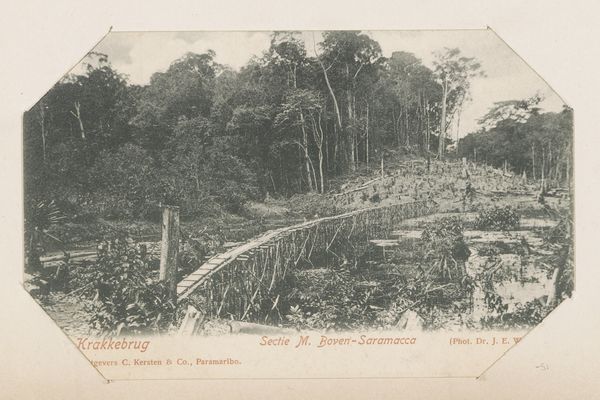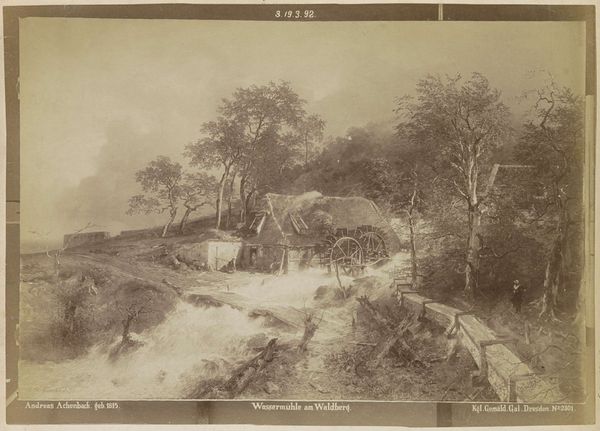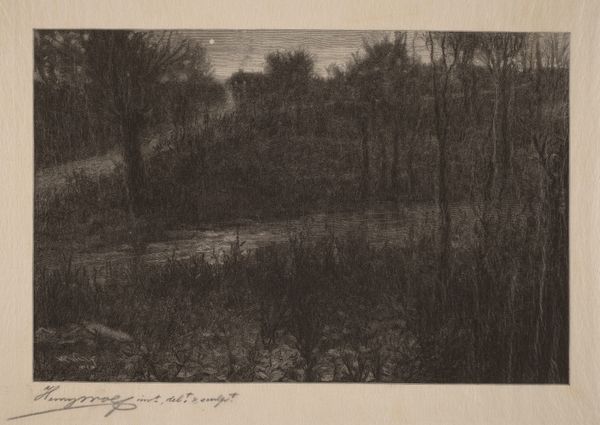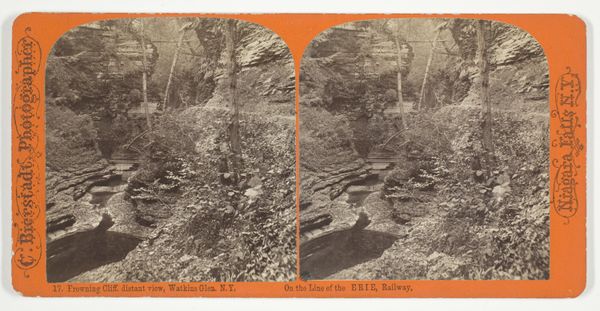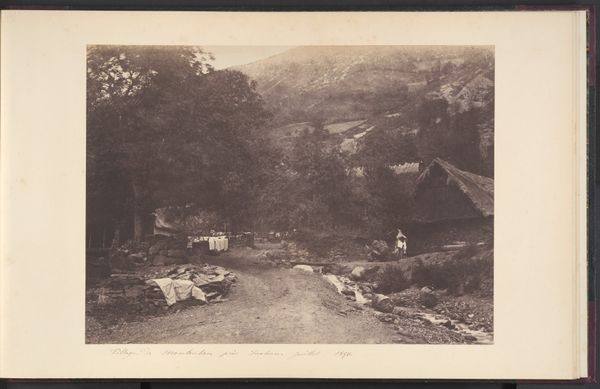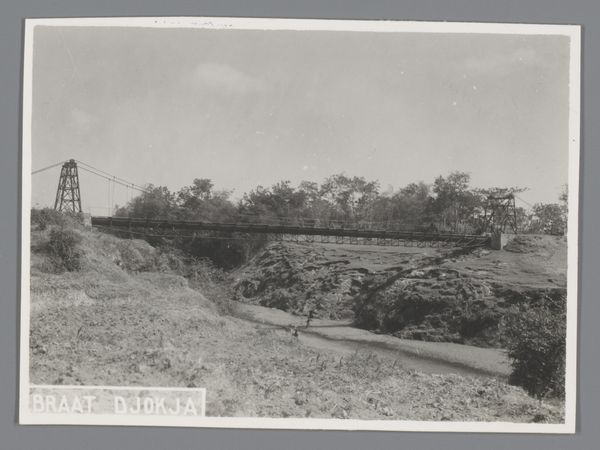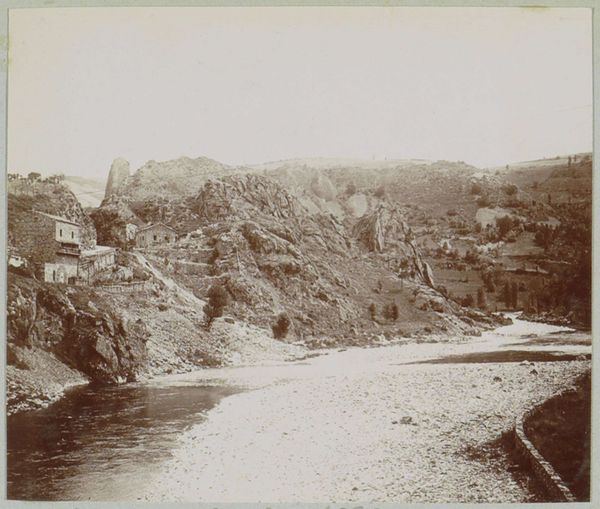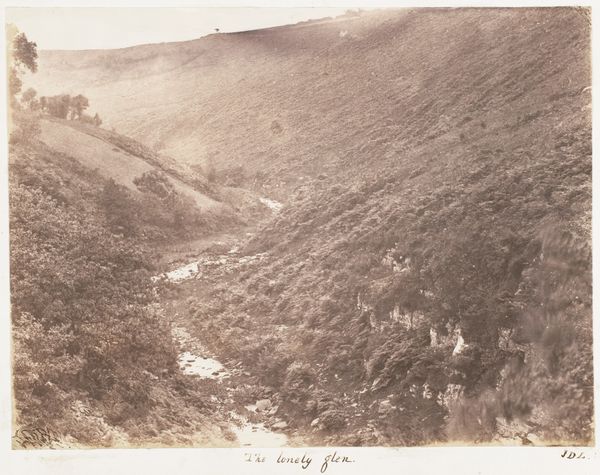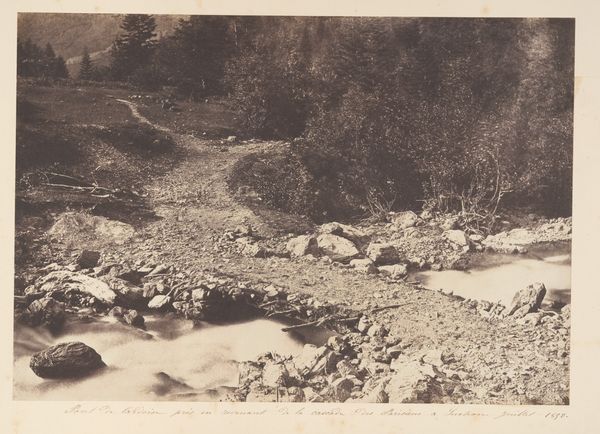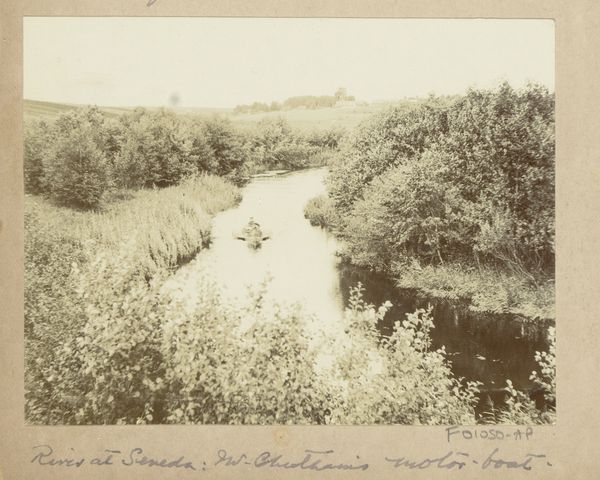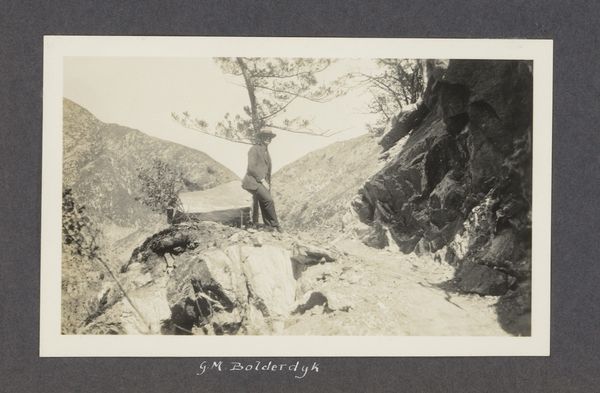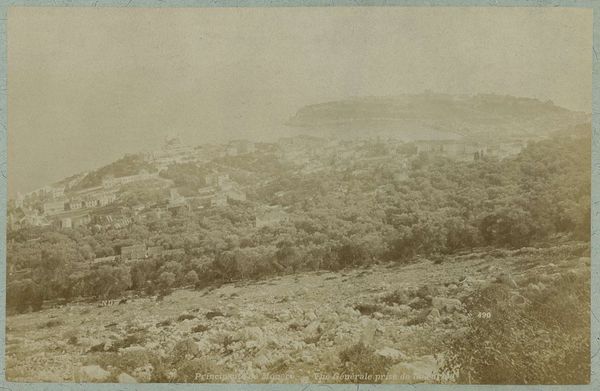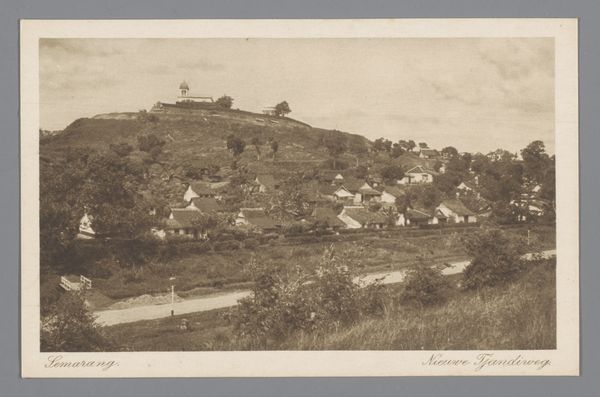
Prentbriefkaart aan Jan Ponstijn en Henriëtte Johanna Petronella van Hilten Possibly 1913 - 1921
0:00
0:00
photography
#
aged paper
#
pictorialism
#
landscape
#
photography
Dimensions: height 87 mm, width 137 mm
Copyright: Rijks Museum: Open Domain
Curator: Leo Gestel’s photographic work, "Prentbriefkaart aan Jan Ponstijn en Henriëtte Johanna Petronella van Hilten," likely created between 1913 and 1921, invites us to consider the subtleties of pictorialism. What strikes you first about this monochrome landscape? Editor: It evokes a certain melancholy. The tonal range seems limited, compressed almost, rendering a muted atmosphere over the scene of dunes. There's a pathway leading the eye, but the shadows and textures create a slightly somber feeling. Curator: Indeed. Gestel manipulates light and shadow quite consciously, almost like paint. Observe how he employs soft focus; the granular texture across the print flattens depth and enhances a subjective impression of reality rather than a direct representation. He creates an intimate landscape rather than objective. Editor: It makes one ponder who had access to this natural scenery during the period it was created. Landscape photography in this era frequently intersected with evolving notions of environmental stewardship. Given Gestel's social circles, might we see an attempt here to reclaim spaces through representation—challenging class divisions implicit within land usage? Curator: It’s plausible. But consider too, the formal composition. The recessive nature of the composition relies heavily on tonal arrangements creating an elegant aesthetic experience. See how the horizontal band bisects the lower third of the frame—balancing the textured vegetation of the foreground and allowing our gaze to wander beyond. Editor: Even as it allows, it also obstructs. What social codes determine who can transgress lines within constructed landscapes like these? In pictorialism, the very act of aestheticizing landscape perhaps functioned to neutralize concerns of inequity shaping experiences of space and place. Curator: Perhaps. Nevertheless, as a photographic study it transcends simple representation, offering a refined aesthetic interpretation of landscape elements through pictorial manipulation and thoughtful tonal control. The medium itself becomes the message here. Editor: For me, viewing it now—through our contemporary moment, I see both visual intrigue coupled by questions concerning historical dynamics around ecology, place, and power embedded in supposedly "natural" vistas.
Comments
No comments
Be the first to comment and join the conversation on the ultimate creative platform.
